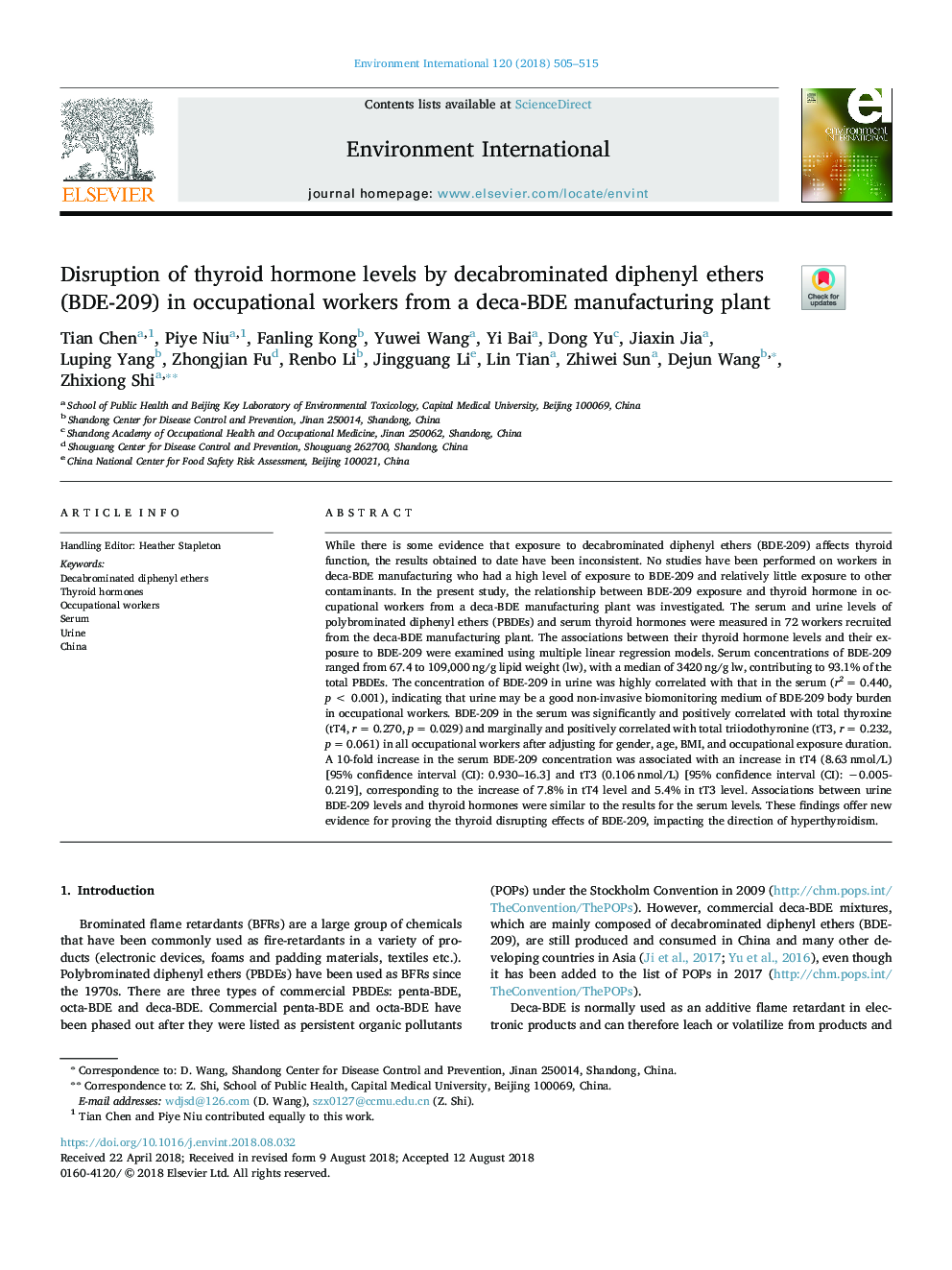| Article ID | Journal | Published Year | Pages | File Type |
|---|---|---|---|---|
| 8855037 | Environment International | 2018 | 11 Pages |
Abstract
While there is some evidence that exposure to decabrominated diphenyl ethers (BDE-209) affects thyroid function, the results obtained to date have been inconsistent. No studies have been performed on workers in deca-BDE manufacturing who had a high level of exposure to BDE-209 and relatively little exposure to other contaminants. In the present study, the relationship between BDE-209 exposure and thyroid hormone in occupational workers from a deca-BDE manufacturing plant was investigated. The serum and urine levels of polybrominated diphenyl ethers (PBDEs) and serum thyroid hormones were measured in 72 workers recruited from the deca-BDE manufacturing plant. The associations between their thyroid hormone levels and their exposure to BDE-209 were examined using multiple linear regression models. Serum concentrations of BDE-209 ranged from 67.4 to 109,000â¯ng/g lipid weight (lw), with a median of 3420â¯ng/gâ¯lw, contributing to 93.1% of the total PBDEs. The concentration of BDE-209 in urine was highly correlated with that in the serum (r2â¯=â¯0.440, pâ¯<â¯0.001), indicating that urine may be a good non-invasive biomonitoring medium of BDE-209 body burden in occupational workers. BDE-209 in the serum was significantly and positively correlated with total thyroxine (tT4, râ¯=â¯0.270, pâ¯=â¯0.029) and marginally and positively correlated with total triiodothyronine (tT3, râ¯=â¯0.232, pâ¯=â¯0.061) in all occupational workers after adjusting for gender, age, BMI, and occupational exposure duration. A 10-fold increase in the serum BDE-209 concentration was associated with an increase in tT4 (8.63â¯nmol/L) [95% confidence interval (CI): 0.930-16.3] and tT3 (0.106â¯nmol/L) [95% confidence interval (CI): â0.005-0.219], corresponding to the increase of 7.8% in tT4 level and 5.4% in tT3 level. Associations between urine BDE-209 levels and thyroid hormones were similar to the results for the serum levels. These findings offer new evidence for proving the thyroid disrupting effects of BDE-209, impacting the direction of hyperthyroidism.
Keywords
Related Topics
Life Sciences
Environmental Science
Environmental Chemistry
Authors
Tian Chen, Piye Niu, Fanling Kong, Yuwei Wang, Yi Bai, Dong Yu, Jiaxin Jia, Luping Yang, Zhongjian Fu, Renbo Li, Jingguang Li, Lin Tian, Zhiwei Sun, Dejun Wang, Zhixiong Shi,
